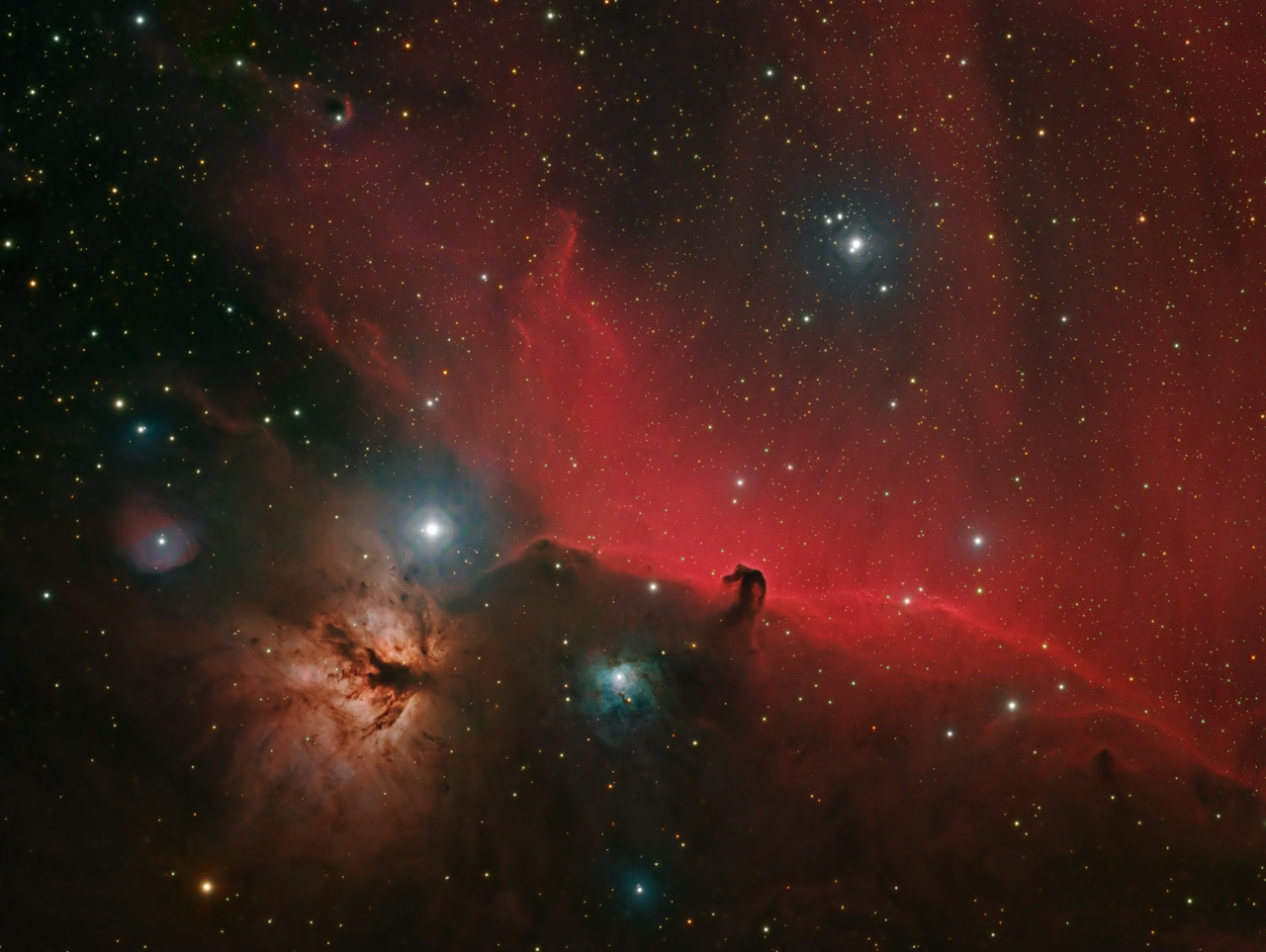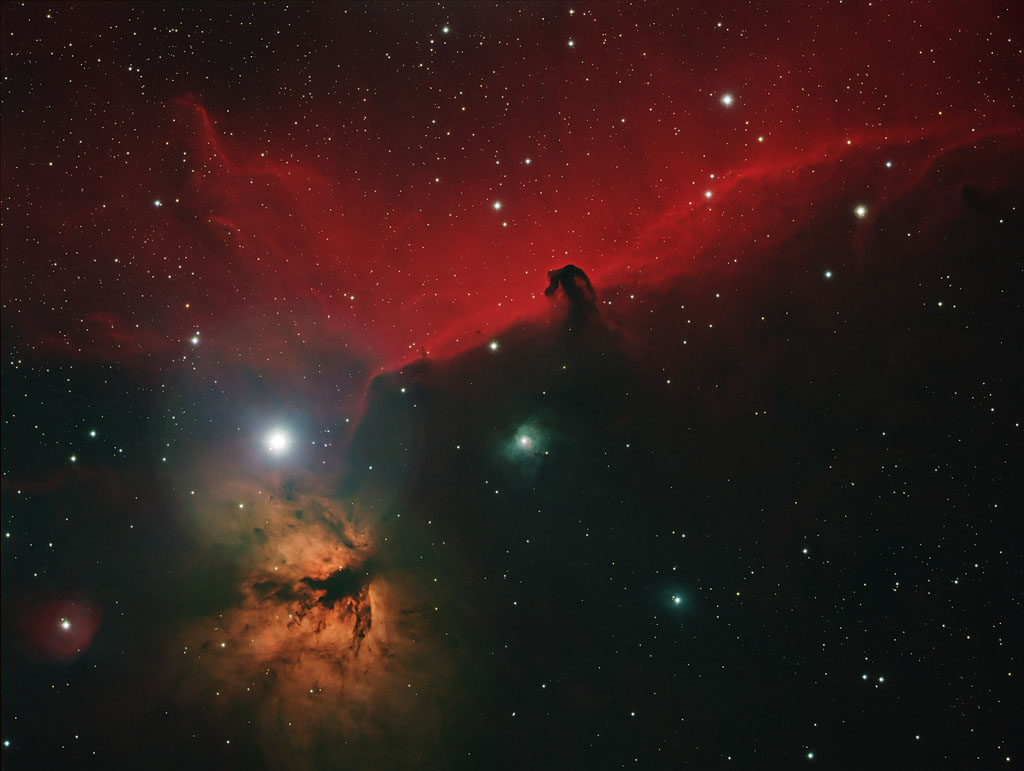I’m back home from California, and starting to work on some of the images I captured down there and haven’t yet processed. The place we set up our telescopes is actually right next to where some horses live, so it seemed appropriate to shoot the Horsehead Nebula in Orion. Well, I was planning to shoot this anyway, but I hope all the horse people out there will appreciate it.
The Horsehead itself (below and slightly right of center) is a dark nebula, a dense cloud of dust that is blocking light that originates behind it, forming a silhouette. In many cases of dark nebulosity the light source is just a field of stars, but in this case it is almost entirely an emission nebula – ionized hydrogen molecules emitting light as they decay. Although this emitted light is relatively bright, it is very difficult to see with a visual telescope because our eyes are quite insensitive to red when it is dim. In fact, the red here comes from the hydrogen-alpha emission line, but people often use a hydrogen-beta filter (a blue-green color) to observe the Horsehead. Although the H-a is much stronger than H-b, our eyes are better able to see in the blue-green range.
The other big nebula in this image is the Flame Nebula, to the left of the Horsehead, and also a dark nebula. A smaller, but equally interesting area is the blue-green patch between the Flame and the Horsehead. This is a reflection nebula. Light from a very bright star (in the center of the reflection nebula) reflects off the same cloud of dust that forms the silhouette of the Horesehead.
The bright star just above the Flame is Alnitak, the left star in Orion’s belt. If you compare this with my much older image of the same area (see below), you’ll see that I did a lot of work to keep this star from degrading everything around it:
On the other hand, the new image has a lot of artifacts around this star. I’m not sure whether these artifacts are from optical effects (different telescope, filters, and camera), or side-effects of the processing I did to minimize the star “bloat”.
This was captured with the SVX80T telescope at it’s native f/6 focal ratio (480mm focal length). I captured it with RGB, luminance, and H-alpha filters, generating a composite of H-a and L to use as a luminance layer over the RGB data.
I have 2 more images that I captured in California and haven’t finished processing. But I might re-post some of the images I already posted here because I’m finding that processing them on my laptop produces very different colors than what I get from my calibrated monitor at home – and not in a good way!
It’s good to be home! After staying in rather cramped quarters for 6 weeks, my wife and I found ourselves really admiring how nice our house is. But it’s been cloudy all the time and raining much of the time since we got back. It was a nice change for a couple of days, but I’m over it.

